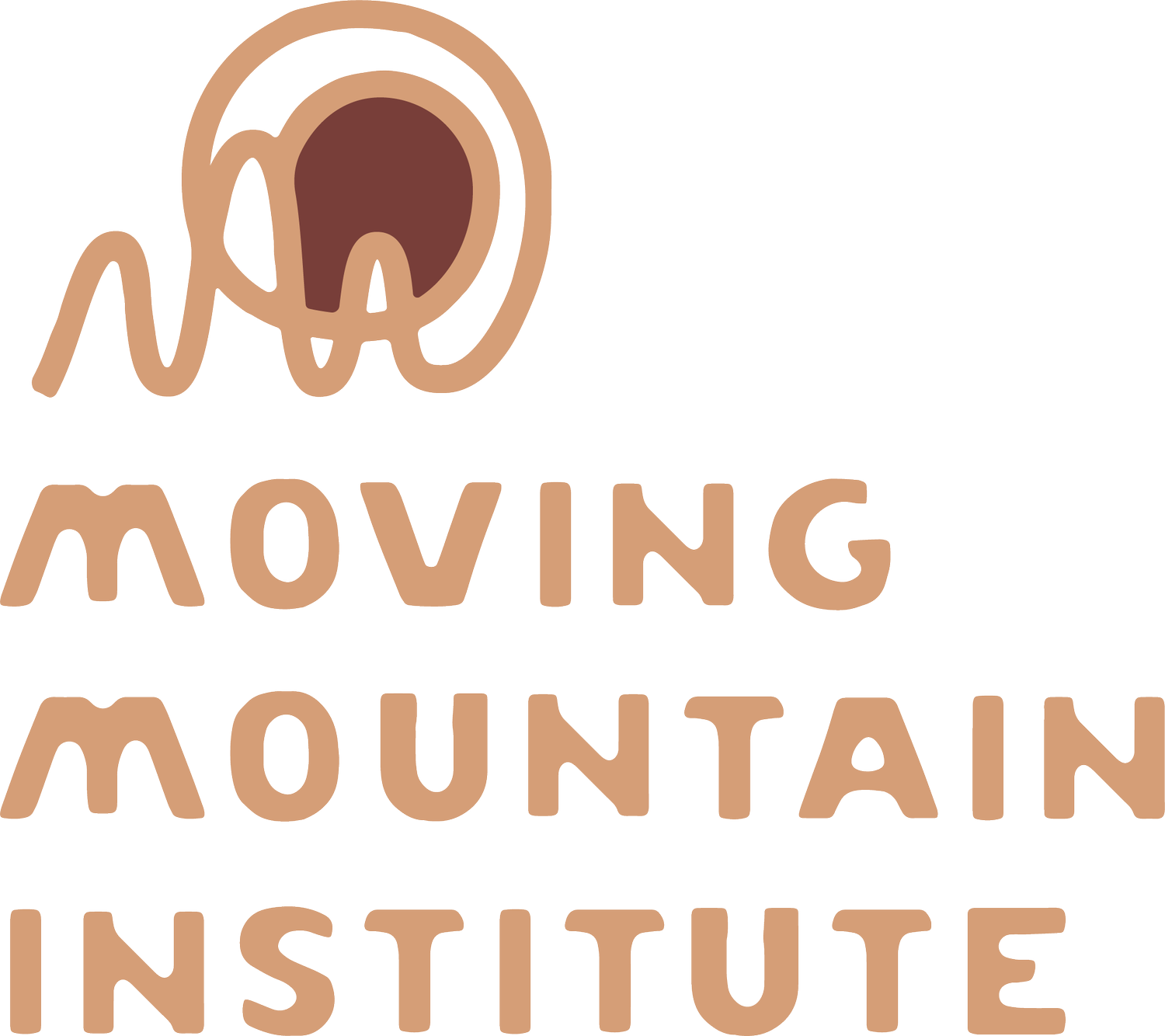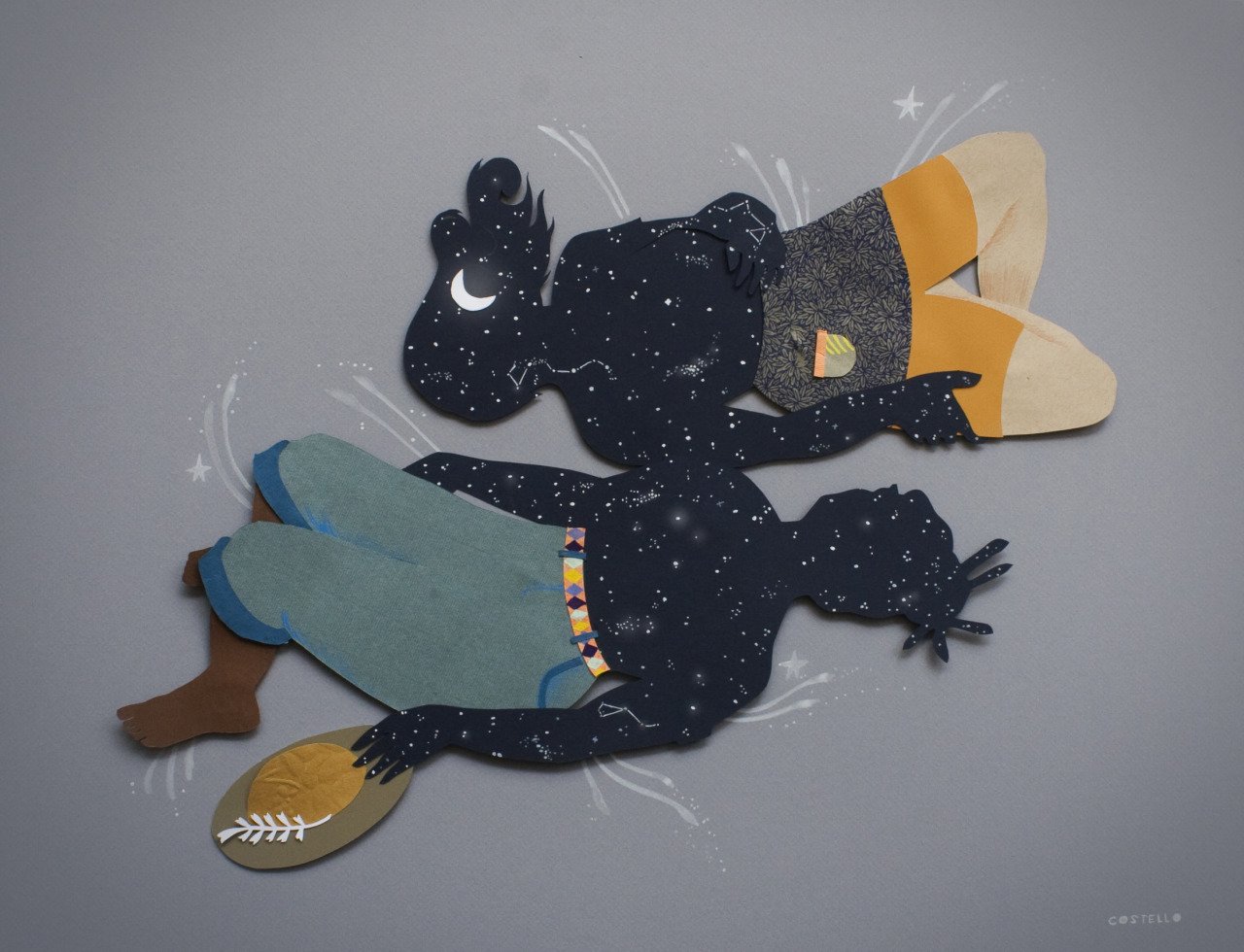Students Matter!
/"Rainbow Falls Abstraction" by Lyndsey Fox * Giclee Print * lefoxstudio.com @lefoxstudio
We recently talked with Michael about his past experiences as both learner and facilitator and how these have shaped him in his journey as a teacher, in building curriculum and ensuring students matter. Sharing some of the highlights from our conversation below!
Q: How did you come to be a person who cares about education, healing, and social change?
A: I didn’t begin my undergrad experience thinking I was going to study education and social change. I was interested in literature. But I was also an “off the beaten path” kind of person. So, I took an Education and Social Change class, and that changed everything. It became my passion while I was in school. I created my own “American Studies” literature major. I took seminars about James Baldwin, Indigenous literature, Marxist history of Enslavement, and Philosophy of Education where I encountered Paulo Freire and bell hooks for the first time. I don’t know how I knew to be curious about that stuff, but I was (mind you this was circa 1990-1992).
After school I ended up out west in rural Northern California, and I was working at a therapeutic boarding school. There weren’t opportunities to learn or practice what I had studied in college. This is where and when I got into healing and bodywork.
Q: How is what you’ve learned over the past 20+ years informing you today?
A: Right now, I’m looping back and gathering and connecting my interest in education as a vehicle for social change with my interest in teaching folks all of these beautiful and helpful techniques, that in the last 20 years I’ve explored - how craniosacral, body work, East Asian medicine, education, and social change can be combined and integrated. It’s an interesting and important combination of topics to be exploring. I’m asking myself how I can bring these seeming (yet not) disparate fields into my classes in ways that are consistent with why students are there?
Q: How has your own learning experience changed over the past couple of years?
A. Over the last year or so I've been experiencing a spiral learning moment. I like the concept of spiral learning a bit better than that of circular learning which is more frequently referenced. Spiral means we have changed since we last encountered the material and as such the material has new things to teach us. That really resonates with me now and how I approach creating learning spaces now for our students.
"St. James #3" by Rico Gatson * Color Pencil and Photograph on Paper * ricogatson.com @rico_gatson
Q: As a classroom facilitator who is deeply committed to liberatory pedagogy and centering your students, can you share with us why your students matter?
A: My students matter because all this work is beautiful and amazing and the opportunity to do it in and of itself is an incredible privilege. All their patients matter to me, all the people they’re going to work with for their whole career matter to me, their business success matters to me, them paying their bills matters to me, them feeling satisfied matters. I feel fortunate that I found a job that I like now just as much as I did when I first started it. That matters to me. I don’t want people to burn out. This way of working made it so I don’t burn out and that my hands don’t hurt. From the most practical to the most kind of philosophical or spiritual, all this feels important when I’m teaching or creating course curriculum.
Students matter because they are how the medicine we study lives in the world. I learn so much from my students about what’s important in our work. I’m grateful to learn from my students about how younger people and people with different socially constructed identities than me are thinking about things. I love that. It’s necessary. It’s an example of how we grow and evolve through the relationships we have that matter to us. My student relationships matter to me, I’m there to serve them, and in service, I want to engage with what is important to them. That way I grow alongside them. Together we share our perspectives and insights and when that spirit lands in the classroom it’s a potent place to be.
Q: What do you get from teaching, from your students, from being in collective and curious learning environments together?
A: I love being with students because it's a really live ongoing field of inquiry. This inquiry can’t happen without students. Linda Barry said “I can’t pursue my questions without students.” Ultimately, we can’t pursue our questions without other people. Every time I teach, all that is happening for me.
Students are the future, and in many ways, I’m already the past. I get to stay current by choosing to stay current. But I’m not the future the way students are the future. I’ve been really privileged to learn a lot from a lot of amazing people. I want to share all of that, and I want to share it in the ways that we can keep evolving with all of this content together. We don’t have to stay stuck in outmoded ways of doing things on any level. I mean that’s kinda what we are also trying to offer patients so it should be the operative spirit in the classroom too.
Q: What kind of intention is put into how Moving Mountain Institute courses are designed and facilitated?
A: I want the atmosphere of the classroom to mimic what it’s like to work with patients. One of the critiques that I get from students is that on some level some of the way the class is set up is a little bit unpredictable. That unpredictability is intentional and importantly within very clear boundaries. I explicitly reject the banking system of education and try my best to set students up to form a relationship with the content - which ultimately comes down to how we understand the body, the riddle of embodiment. I am certainly not an expert there, I am duly riddled like all of us.
Creating a course is like an art project. Meeting with a patient is part art. At the end of a patient visit or a class something should have happened that you can put a frame around and see something happened, there’s some meaning to the time spent. Art’s one of the best places to look, because our work has that live, unpredictability that artists also have to access. This intentionality is woven into all of our courses.
Q: How do these intentions you are holding come to life in the classroom?
A: At a recent craniosacral weekend, I thought the students were feeling a little overwhelmed with the anatomy. I shared my perspective that anatomy is not what we’ve all grown to associate with anatomy. Anatomy is form and form a means through which the body can speak to us. It doesn’t have anything else. All those structures are some wild, inarticulable manifestation of energy and matter and ancestry that all come together to form these unique structures. Anatomy is just the word we have in this culture for the stuff that’s been made manifest by that process. Why I’m interested in examining, naming, and becoming linguistically connected with the form is because that’s how all the energy in the form can talk to us - and how we can talk to it - how we deepen our relationship with the body, by knowing the body.
After this discussion, we read a Natalie Diaz poem “The First Water is the Body.” (poetry is ever present in the classroom) In the poem, she started talking about “preverbal anatomy,” much like we were just discussing! If I was following a script, I maybe wouldn’t have shared that little tidbit about what anatomy meant to me. And if I didn’t share poetry in the classes, then we wouldn’t have had a different perspective on that same idea. We wouldn’t have all had the experience of that magical synchronicity that is what being live and together is. In class, I’m after that middle place between structure and structurelessness that allows the magic and juiciness to emerge naturally in the collective environment.
"In Dreams We Wake II" by Molly Costello * mollycostello.com @mollyccostello
Q: When have you felt frustrated with your learning environments and when have you felt supported by them?
A: My experience as a student in bodywork seminars has largely been negative. I mean the content and the techniques were great. But, the setup and delivery was just awful. A hundred plus people packed into a hotel conference room, three or four 8 hour grinding days of rapid fire techniques and lectures - it was dizzying and impossible to retain much of what was happening and yet I wanted to learn it so badly that I suffered through it. I probably learned 20-30% what I could have for all that time and money. It was all just such a disconnect from the actual work we were trying to learn.
That frustration is what led me to want to teach and develop my own curriculum. It was hard for me to step out on my own. I revered Baral and Upledger and Barnes and still do despite their current problems. It was hard for me to step out and say I’m going to do this too. It wasn’t even until this cranial project that I really did that.
Q. When and how did you decide that you wanted to dedicate your time to understanding how we learn best?
We’ve all been in classroom spaces with amazing people who know their content really well but haven’t figured out how best to teach it. This goes back to why students matter. In my opinion that isn’t good practice. It’s not respecting the folks there to learn or the medicine we are communicating.
In college I took a speech class to fill an elective credit that ended up being one of the most impactful educational things that I did. I got a terrible grade on my first speech. I went to talk to the teacher. It was a hard conversation but it made such an impact. They told me that while my speech was fun and a little interesting it was terrible because I hadn’t respected my audience. They taught me that every time you are in front of an audience it is a “speech act” and the first and most important rule in a speech act is to respect your audience. Teaching is a speech act in a way and respecting the audience means being thoughtful and intentional, understanding the setting and why folks are there.
No matter what you are teaching, the most important thing is to respect your audience. As an educator, respecting my audience means being prepared as a teacher. That means thinking about what I want people to be able to do by the end of the experience, what they need to know to do that, and how everything we’re doing leads to that result. I want to have an answer to each of those questions when I teach.
Q. How does this inform how you show up as a teacher now?
A. When I first started teaching, I was both over and under estimated myself and the job. I figured it would be easy since I knew the content so well it would be easy. I underestimated how challenging teaching is and overestimated the degree to which what I knew mattered.
After my first night teaching I realized I knew the content really well, but I didn’t know how to teach this to these people. What did they need from me? That’s when I knew I needed to learn how to teach.
The more I understand pedagogy, the more I can be intentional about everything I do as a teacher including critiquing what we’ve all come to expect out of pedagogy. A lot of my approach is really an inquiry based method. I don’t have new questions, and I never have definitive answers. The pursuit constantly takes me further into different aspects of it.
Part of how I understand my role now is to pay attention to what’s happening around me that feels important and resonant, and then combine it with the techniques or modalities that people are wanting to learn from me. My goal is to create an educational environment that includes and acknowledges all of that. I don’t see many models around me for how to do this. I really feel called to answer the concerns and priorities that students have. I feel a lot of gratitude to have been able to learn the techniques I practice and from that a very positive obligation, to teach and share them in the best way I can.
Q. How does this inform how you create curriculum and learning spaces that matter?
A. I work really hard to try to create environments that have enough structure so things can happen, enough knowledge so people feel oriented and can do meaningful work, and enough space to do it their way, from the beginning. There’s not a lot of pedagogical books written to address that perspective of teaching. That’s why I look at art so much. Making a course is an art project. Meeting with a patient is an art project. Something should have happened that you can put in a frame and see something there.
This aspect is still really stressful as a teacher, but it’s good because it means I’m really open. It means I’m not gripping too tightly and I don’t feel like I know everything that I’m going to do. It might feel better and alleviate some anxiety to have a super detailed plan, but I’m not going to realize what some of my goals are that way. John Barnes says that if you have a practitioner and they say they know what they want to do in treatment without touching you, then you should walk out of the room. I approach my teaching that way too. I don’t want to know too much of what we’re going to do. I want to know just enough. Because, then that moment of super cool conversation that we all need might not happen.





